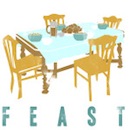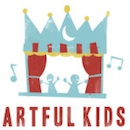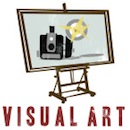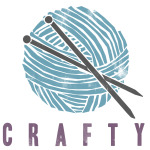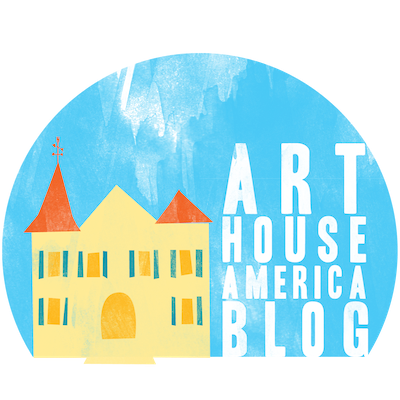The act of writing itself carves out space for beauty in my life. This has always been true, but without the pretention of doing something big and important, I can relax into whatever shows up on paper—the mess and joy and struggle and grief and giggles of life. These are not the habits of a serious writer, of course. These are not the daily practices and evaluations needed to send a piece out into the world, just as letting the garden go to the wild won’t work as a long-term strategy. But this is what writing is to me right now, how I remember that writing starts with glimpsing into a world of magic, that it starts with, “Here I sit.”
 I don't notice the robin making her nest. Neither do I notice when she lays her eggs. I don't know how long she bides her time there, waiting for their hatching. After two weeks of rain, the kids and I come outside, squint in the sun, and find four tiny beaks stretching up from a nest on our meter box. The mama robin swoops in, drops in her food, and then flies to a nearby branch to keep watch. We are mesmerized.
I don't notice the robin making her nest. Neither do I notice when she lays her eggs. I don't know how long she bides her time there, waiting for their hatching. After two weeks of rain, the kids and I come outside, squint in the sun, and find four tiny beaks stretching up from a nest on our meter box. The mama robin swoops in, drops in her food, and then flies to a nearby branch to keep watch. We are mesmerized.
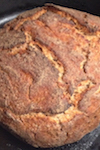 For a long time, I did not love poetry.
For a long time, I did not love poetry.
I read poetry. I memorized poetry to get me through a job that left me weary from boredom. I tried to understand poetry. But I didn't love it.
I loved words. Any words. Words in books, words in songs, words on the shampoo bottle. I loved stories — long ones, short ones, fat ones, skinny ones. I loved metaphors. I even loved select poems. But I did not love poetry.
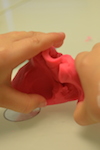 As much as motherhood has taken away — time to write, the ability to practice the piano without little hands taking over the keyboard ("Scooch, Mama”), the mental acuity to use polysyllabic words (or, some days, to finish sentences) — it has given me more. I have not lost myself in motherhood, as I had feared, but discovered myself. I don't just mean I've realized the beauty and joy of being a mother, but in and through motherhood I've grasped new ways of being creative. I learn creativity from my children, who are infinitely the same as and different from me; I learn creativity through my desire to create for them; I learn creativity simply by opening myself up to being something else.
As much as motherhood has taken away — time to write, the ability to practice the piano without little hands taking over the keyboard ("Scooch, Mama”), the mental acuity to use polysyllabic words (or, some days, to finish sentences) — it has given me more. I have not lost myself in motherhood, as I had feared, but discovered myself. I don't just mean I've realized the beauty and joy of being a mother, but in and through motherhood I've grasped new ways of being creative. I learn creativity from my children, who are infinitely the same as and different from me; I learn creativity through my desire to create for them; I learn creativity simply by opening myself up to being something else.
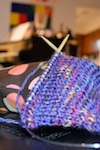 At some point, I notice an anomaly in the sweater — the consequence of knitting while watching TV. I’ve messed up the pattern, miscounted. I consider the damage. How much work would it take to undo four rows of stitches and re-knit? How noticeable is it? In the end, stitch by stitch, I remove the rows. I’ve become quite accomplished at this work of unknitting, even with complicated slipstitches, increases and cables. The piece won’t be perfect (how else would they recognize it as hand-knit?), but I want it to be beautiful.
At some point, I notice an anomaly in the sweater — the consequence of knitting while watching TV. I’ve messed up the pattern, miscounted. I consider the damage. How much work would it take to undo four rows of stitches and re-knit? How noticeable is it? In the end, stitch by stitch, I remove the rows. I’ve become quite accomplished at this work of unknitting, even with complicated slipstitches, increases and cables. The piece won’t be perfect (how else would they recognize it as hand-knit?), but I want it to be beautiful.
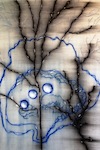 There’s an aloneness to art. We type, paint, sculpt, compose in isolation. We create to realize our theologies, philosophies, hurts, joys, doubts, faiths. We create to understand and work out our lives. And because we worship what we perceive to be the fount of truth and beauty (a God or gods, self, nature, universal energy, materials), we create to worship.
There’s an aloneness to art. We type, paint, sculpt, compose in isolation. We create to realize our theologies, philosophies, hurts, joys, doubts, faiths. We create to understand and work out our lives. And because we worship what we perceive to be the fount of truth and beauty (a God or gods, self, nature, universal energy, materials), we create to worship.
But while worship begins as a personal endeavor, it involves other people around us.
 Once upon a time, a man and woman lived as caretakers in a garden ripe with mangoes and tomatoes and figs. I try to conjure up an image of cultivation without snails and squirrels and rabbits attacking my plants, without weeds demanding my constant attention, without the threat of too much water cracking my tomatoes and not enough withering the plant. Did Adam and Eve sing the fruit into bloom?
Once upon a time, a man and woman lived as caretakers in a garden ripe with mangoes and tomatoes and figs. I try to conjure up an image of cultivation without snails and squirrels and rabbits attacking my plants, without weeds demanding my constant attention, without the threat of too much water cracking my tomatoes and not enough withering the plant. Did Adam and Eve sing the fruit into bloom?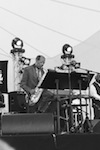 I want to tell you about my reality, about how boring and splintered it can be, how chaotic and bland, how unexpected and structured it is. In other words, I want to tell you about the ordinariness of my life and how that ordinariness doesn’t feel as beautiful as Wendell Berry makes it out to be.
I want to tell you about my reality, about how boring and splintered it can be, how chaotic and bland, how unexpected and structured it is. In other words, I want to tell you about the ordinariness of my life and how that ordinariness doesn’t feel as beautiful as Wendell Berry makes it out to be.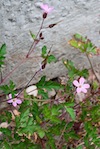 In essence, this was why we met that day in my living room: because beauty matters to God and because, as the body of Christ, we testify to one another that God sees us, that our work matters.
In essence, this was why we met that day in my living room: because beauty matters to God and because, as the body of Christ, we testify to one another that God sees us, that our work matters.
There was some venting, yes; there was philosophy; but above all, there was connection. In the sprawling Dallas metroplex lined with suburban brick homes, school zones, and shopping centers, visual artists, musicians, and writers assembled. We peeked into the crevices of our landscaped society and found wildflowers.
 We create art to communicate, to be known and to make known. Art may begin with self-expression, but it doesn’t stop there. We discover, we respond, and we offer it up to the world. In this, art creates community. It collects the misfits of the world and gives them a home.
We create art to communicate, to be known and to make known. Art may begin with self-expression, but it doesn’t stop there. We discover, we respond, and we offer it up to the world. In this, art creates community. It collects the misfits of the world and gives them a home.



